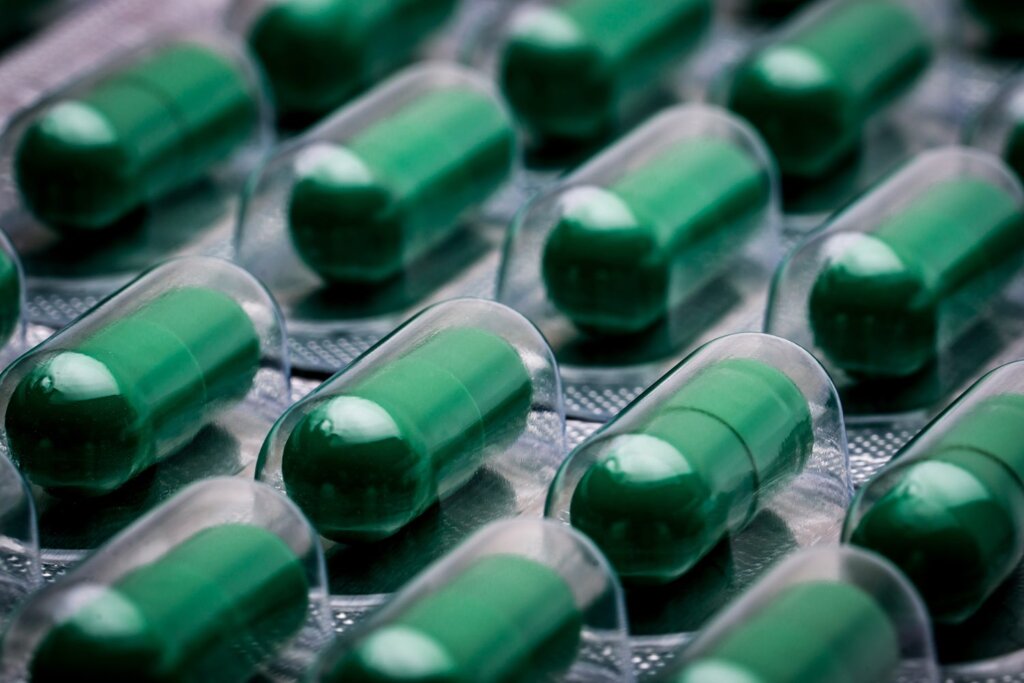Home » How algae could be the answer to everything from biofuel to low-cost pharmaceuticals
How algae could be the answer to everything from biofuel to low-cost pharmaceuticals

The world’s oldest large organisms are bizarre creatures. One of them, an eyeless, mouthless, gutless fish called Dickinsonia, absorbed food through its flat body as it slunk along the ocean floor. Then there’s a sort of U-shaped slug known as Kimberella, which may have eaten while moving backwards. But as unusual as these 550-million-year-old species are, their ancient diet — researchers just learned in November — was pretty mundane. They ate algae.
That’s right: The scuzzy scourge of swimming pools also happens to be the planet’s oldest meal. It’s perhaps unsurprising, given that algae are a hugely resilient consortium of plants, made up of as many as a million different species. They thrive in freshwater lakes and in saltwater oceans. They can live on land, in snowbanks or on the fur of animals. You’ll find algae lurking under the polar ice sheets or surfing the salty Dead Sea. They’re also chock-full of proteins and nutrients, which may explain why the Kimberella and Dickinsonia got so big in the first place. Algae make for excellent fuel.
In fact, it was while exploring its promise as actual fuel (among other products) that Mather Carscallen first became enamoured with algae. “Just looking at it under a microscope — those bright greens, browns, oranges and reds are really beautiful,” says Carscallen, who had been developing a micro-algal research initiative for the National Research Council. “It’s a fascinating organism, but it also has enormous diversity in applications.”
Algae-sourced biofuel is becoming a popular one: Researchers at the University of British Columbia are hoping to lower its cost by streamlining the growth and extraction process, while a R&D group called Ongen is mining Sudbury, Ont.’s hardy green microalgae to help with mass production.
But that’s just the tip of algae’s problem-solving, sustainable potential. From low-cost pharmaceuticals to air-purifying textiles, here are a few homegrown innovations that might just turn slime into gold.

Designer drugs
After Carscallen’s mother was diagnosed with early-onset Alzheimer’s, he became frustrated by the lack of available drugs that could contribute toward her well-being. “The more I started looking, the more I realized this was a big problem in terms of the availability, accessibility and affordability of drugs around the globe,” he says. Typically, active pharmaceutical ingredients — or APIs, the key components that reduce pain or fight inflammation or generally make a drug a drug — are produced by complex chemical synthesis, which can be a costly, time-consuming process (not to mention awfully vulnerable to supply-chain disruption). Historically, however, many APIs were derived from trees and plants — which made Carscallen wonder if algae might be a more sustainable and cost-effective source than genetically modified bacteria and yeast.
He founded Algae-C in 2015 to find out. Carscallen and his team have modified algae strains so that they produce the desired API, whether it is for pain management or another condition. “We harvest the algae, extract the API and purify it, and then the final product goes on to the drug formulation companies,” he says. “It’s a simple process.”
That process is carbon-neutral and creates zero waste. Carscallen says that Algae-C only needs a fraction of the water and energy used by traditional API manufacturing, and it’s turning its residual biomass into a protein-rich product for animal feed.
Algae-C is focused now on the pharmaceutical industry, but keen to expand into nutraceutical and beauty products — there’s a lot you can do with an organism that grows like a, well, weed. “You can double the amount of algae you have in a day,” Carscallen says. “While those first couple days might seem a little slow, as soon as you hit that exponential growth curve, it’s quite spectacular how quickly it grows.”

Breathable duds
As the daughter of a clothing designer, Roya Aghighi grew up with a love of textiles and a suspicion of fast fashion: “I hated seeing it as something disposable,” she says. “That’s our second skin, and I wanted the attention and agency brought back into fashion.” At the same time, living in Tehran, Aghighi often felt she could taste the city’s pollution in the back of her throat. “It just came to me: What if I could create some sort of photosynthetic textile? Something that would actually be good for the environment?”
Curious to explore the potential of using clothing as a catalyst for behavioural change, she worked with material engineers at the University of British Columbia to develop a living textile. Aghighi wove together a type of single-cell green algae (called Chlamydomonas reinhardtii) with nanopolymers to create a proof-of-concept fabric that feels like silk. Once it moves from the petri dish to the closet, the bio-garment has a symbiotic relationship with its wearer: You give the fabric some sunlight and the occasional spritz of water, and it’ll purify the air around you by converting carbon dioxide into oxygen. “Just by being present in our environment, we can do something good.”
Aghighi created Lite-1 to explore the potential of algae, bacteria and fungi in biodesign.
“Imagine if we could cover our buildings with this kind of photosynthetic biocomposite,” she says. “It could transform architecture and urban design.” She’s now developing non-toxic, biodegradable dyes from bacteria that can be used in a range of industries. “We are working to make sure colour doesn’t leave a negative footprint on the environment or the health of humans.”
Slick trick
Omega-3 fatty acids are crucial for our health — they’re good for cognitive function, cardiovascular systems and cell structure — but our bodies can’t actually produce sufficient quantities to reap the rewards. That’s why we need to source fatty acids from our food, generally from fish like salmon and mackerel or supplements like fish oil. It turns out, however, that fish are in the same boat as us: They can’t produce fatty acids naturally, either, so they’re also reliant on their diet, gobbling up zooplankton that have fed on algae that’s rich in omega-3s.
Mara Renewables cuts out the middle fish. “We found marine algae in the Bay of Fundy that’s naturally high in omega-3s, and we’ve developed them in the lab to produce a lot of oil,” says Dorothy Dennis, the associate director of research and development at Mara. “From just a small vial of algae, the cells multiply exponentially, converting carbon into omega-3s that we recover through a solvent-free process.” The result is an oil that can be used in infant and toddler formula, nutritional supplements and food applications, including animal feed (in case your family prefers getting their fatty acids from chicken rather than a tin of sardines). It also significantly reduces the pressure on our aquatic ecosystems and overextended fish stocks.
The algae industry is a nascent one, in need of more experts well-versed in working with the plant. Still, Cascallen says he’s confident that “researchers and companies around the world are starting to figure out its value.” Actually, algae’s reach extends even further than that: In November, when Artemis I lifted off for its moon orbit, the spacecraft contained a shoebox-sized pod of single-cell green algae courtesy of UBC, chosen because it’s such a good source of oxygen, food and fuel. No word yet on how the algae did up there, but it must’ve at least enjoyed the view.
MaRS believes “innovation” means advancing Canadian technology for the benefit of all people. Join our mission.
Photos courtesy: Algae-C and Lite-1
MaRS Discovery District
https://www.marsdd.com/
MaRS is the world's largest urban innovation hub in Toronto that supports startups in the health, cleantech, fintech, and enterprise sectors. When MaRS opened in 2005 this concept of urban innovation was an untested theory. Today, it’s reshaping cities around the world. MaRS has been at the forefront of a wave of change that extends from Melbourne to Amsterdam and runs through San Francisco, London, Medellín, Los Angeles, Paris and New York. These global cities are now striving to create what we have in Toronto: a dense innovation district that co-locates universities, startups, corporates and investors. In this increasingly competitive landscape, scale matters more than ever – the best talent is attracted to the brightest innovation hotspots.


